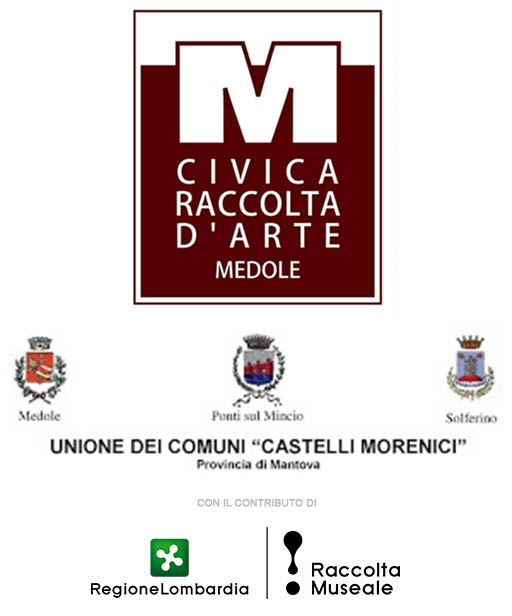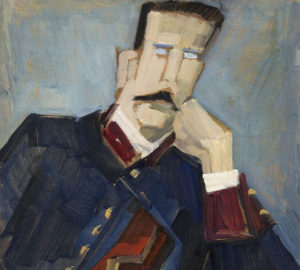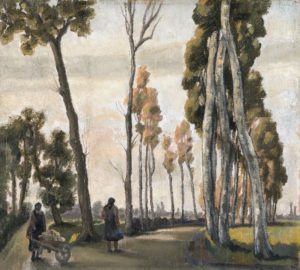1 – Mimì Quilici Buzzacchi
AUDIOGUIDA:
You can grasp the spirit of the collection immediately on entering the first section, which houses works by Emma Buzzacchi, known as Mimì, born in Medole on 28 August 1903. Having developed as an artist in Ferrara and Rome, Buzzacchi actively participated in artistic debates and the Italian cultural sphere from the late 1920s onwards. She participated in the Venice Biennale and the Rome Quadriennale numerous times, not forgetting the 1935 Brussels International Exposition. In 1928, she met Nello Quilici, a writer, journalist, and editor-in-chief of the Corriere Padano newspaper and the Rivista di Ferrara magazine. The pair got married the following year and would go on to have two sons, Vieri and Folco. Buzzacchi handled the artistic pages and graphic design of the magazines run by her husband, demonstrating great skill with the woodcut technique, and the works in this room are a testimony to this. Thematically and sentimentally close to the movement that arose around Margherita Sarfatti, the “Novecento“, Buzzacchi “paints with a great sense of measure, of moderation, keeping in mind both the structural requirements of the painting and the soft, subtle charm of colour” (Mario De Micheli, 1962). These words apply perfectly to a work such as Il nonno Garibaldino, dedicated to her ancestor Giovanni, also from Medolese, who was a fervent patriot and a trusted doctor of Garibaldi. This way this piece is composed is clear and solid, and the broad sections of colours create an angular and impenetrable figure, the image of an ancestor consigned to history. In Strada Ponte Nuovo, the static figures and fairs are inserted into the landscape and have the same hardness of the rows of trees that open up the picture with two fascinating perspectives. In Ca ‘Morino (La finestra d’angolo), on the other hand, a place passed into history as the site of the prelude to the battle of Solferino and San Martino, the plastic values take on a very high poetic sense that evokes the words Michelangelo Antonioni wrote about the artist: “They are landscapes in an ideal space, perhaps that of memory”.
- Mimì Quilici Buzzacchi, Il nonno garibaldino, 1961
- Mimì Quilici Buzzacchi, Strada Ponte Novo


